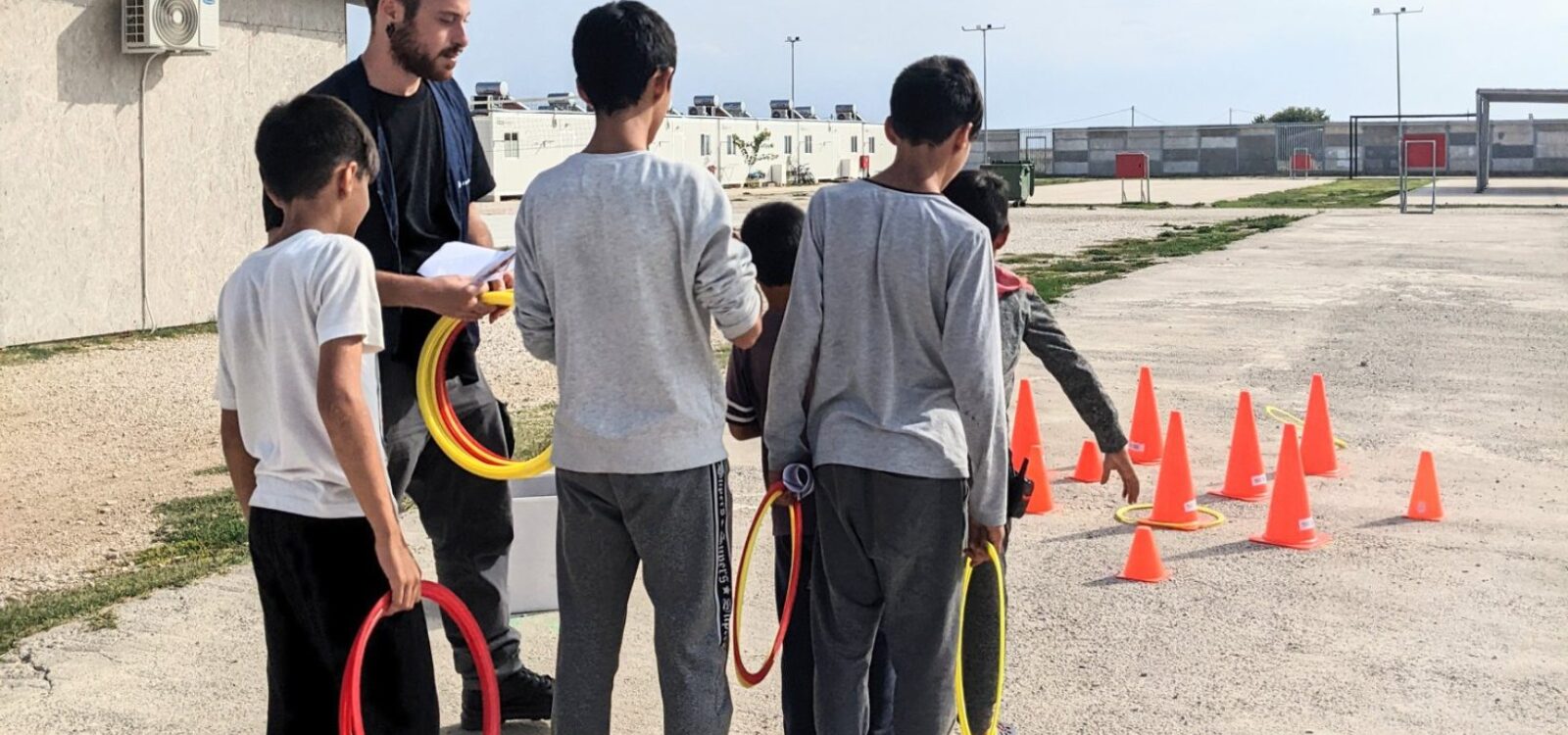
Using Data for Good: A Practical Example
You may have seen the Actuaries Institute use the phrase, ‘Actuaries use data for good’.
Last year, I took a career break and had an unexpected opportunity to put this phrase to good use while volunteering at a refugee camp in Greece.
Our profession has many opportunities to use our skillset across a vast range of disciplines and to work on truly important problems. The extent to which we create and take advantage of these opportunities will only increase as we get better at communicating and sharing our value with the rest of society.
About the refugee camp
The charity I volunteered for is a Norwegian charity called Drapen i Havet, known in English as A Drop in the Ocean. The charity operates within several refugee camps in Europe. I volunteered in the Nea Kavala camp located in Northern Greece.
The camp has a capacity of 1600 people, with the actual population greatly fluctuating during the year depending on the capacity of other refugee camps in Greece. Drapen i Havet’s description of the challenges of living in the camp accurately reflect what I witnessed:
“The geographical location of the camp makes it prone to extreme weather conditions, like strong winds and cold temperatures during wintertime, and very high temperatures in the summer. Furthermore, the remoteness of the camp adds to the already challenging situation the residents face… All residents live in Isobox containers consisting of two small rooms, a small kitchenette, and a bathroom.[1]

Up until February 2024, Drapen i Havet was active at Nea Kavala camp and ran several initiatives, including ‘logistics’ (the distribution of food, clothes and hygiene items), as well as English classes, a Youth Club, a Female Friendly Space and integration support activities.
It was primarily through my involvement in the logistics stream that I discovered the usefulness of my data analysis skills.
From there, the opportunities to assist the other programs with structuring, analysing and reporting data only multiplied.
It all began with some census analysis
While sitting in Drapen i Havet’s clothing distribution centre, another volunteer on duty expressed frustration with how long it had taken him to analyse information about the residents who were on the charity’s food distribution list.
Each week, Drapen i Havet received census data providing details about every resident in the refugee camp. Additionally, they possessed a list of individuals who the camp management did not provide food to; residents who had received a positive decision from the Greek government that officially granted them asylum-seeker status. These residents, who were excluded from the camp’s food distribution, were then added to Drapen i Havet’s own food distribution list.
The volunteers wanted to merge these two data sets together, bringing information about the residents in the food distribution list into the census data. If you work in insurance, you can easily see that this is analogous to joining claims data with policyholder data, which can be done using an INDEX-MATCH function or VLOOKUP function using each individual’s unique policyholder ID.
I set up an example spreadsheet to show how I would have joined the two data sets together. The volunteer looked at what I had created and said that what I had done in a few minutes had taken him a few hours.
This is when I had my ‘aha moment’.
Actuaries have many opportunities to improve data analysis efficiencies in less obvious lines of work – when we are able to find those opportunities and act on them. While it’s easy for us to dismiss spreadsheet analysis as ‘grunt work’, it’s important to remember that it took us many years of on-the-job experience to obtain this level of mastery, and there are people who can greatly benefit from our abilities.
The fun continued from there…
After this experience with the census data, I began helping other volunteers with their spreadsheet needs, alongside my normal duties of working in logistics and running English classes.
I helped Drapen i Havet improve their inventory spreadsheet, which tracked how many clothes, food items and hygiene items they had available to distribute. This helped Drapen i Havet decide when they needed to purchase or source more items, and how much of each item they needed.
Drapen i Havet also ran a Youth Club for camp residents aged between 10 and 18 to play sports and do arts and crafts. I set up a spreadsheet which tracked all camp residents aged 10 to 18, and included information such as who had received consent from their guardian to participate in Youth Club, who attended the club regularly, and which residents had school commitments that would stop them from attending club activities at certain times.
Previously, the other volunteers manually cross-checked Youth Club attendees with the list of school attendees. It was gratifying to see the effect that automation had in increasing the confidence of the volunteers in the accuracy of their data.
I was also reminded that spreadsheets are helpful for analysing and presenting qualitative, not just quantitative, data. In the lead up to creating the Female Friendly Space, Drapen i Havet ran roundtables for female camp residents to express their views on the activities they wanted in the space and how they wanted it to be run.
I helped the volunteers working on this initiative with how best to record the feedback in a spreadsheet, and how to efficiently identify common themes emerging from the feedback.
The power of data
When I first began helping other volunteers with their data questions, I thought that teaching Excel was about teaching new formulae.
However, I soon realised that it is just as important to know how to efficiently navigate spreadsheets. How do you quickly get to the last populated cell of a column? How do you populate a row with the same formula?
Structuring a spreadsheet and presenting results is also important. How do you sort information by a particular column, or expand cells that contain a lot of text? The answers to these questions are like bread and butter for people who use Excel daily, but not immediately obvious to those who don’t.
My experiences also revealed how important it is for actuaries to understand clients’ needs and wants.
The most simple data analysis solutions could be more useful to the client than the more complex solutions. If we assume that the Pareto principle applies in this context, 80% of an organisation’s data analysis needs are served by the simplest 20% of a spreadsheet’s functionalities.
Indeed, these are simple, teachable data analysis skills that can be implemented immediately. These skills are easily transferable and not dependent on the continued presence or assistance of an actuary to maintain the data solution. As the adage says, “it is better to teach a man to fish…”
Where to next?
There is a huge untapped opportunity for actuaries to help sectors that do not require data analysis as a core capability of its graduates, but which nonetheless require it in their day-to-day work.
If we take the not-for-profit sector as an example, imagine how much time and energy we could save for frontline workers.
A few hours a week, multiplied by a few hundred charities, translates to incredible savings and efficiencies – more time and energy that frontline workers can spend on high-value interpersonal work, professional development and physical and mental health.
The Actuarial Hackathon is one Institute initiative where actuaries collaborate to provide solutions to business problems posed by the not-for-profit sector.[2] But this is only the beginning. Actuaries have so much more scope to use data for good in the not-for-profit sector, to benefit society and to promote the brand of actuaries more broadly.
References
[1] https://www.drapenihavet.no/en/our-work/northern-greece/
[2] https://www.actuaries.asn.au/microsites/2024-actuarial-hackathon.
CPD: Actuaries Institute Members can claim two CPD points for every hour of reading articles on Actuaries Digital.






